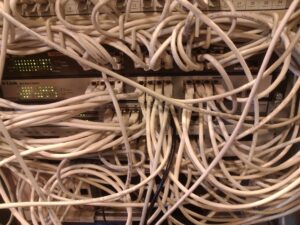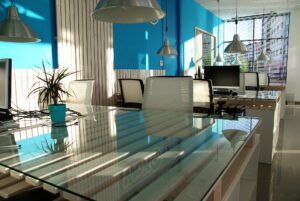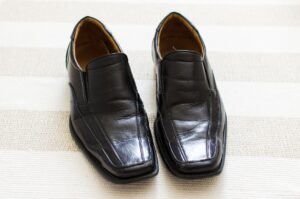Is This Health And Safety Or Common Sense?

We’ve heard it more times than we can count; a complaint about Health and Safety gone mad when people are stopped from doing something they’ve done before even though they could end up hurt. Just because someone hasn’t hurt themselves yet doesn’t mean they won’t in the future, and Health and Safety is all about reducing the risk of those injuries occurring.
It might seem over the top. There might be cries for common sense to prevail. Yet, what you can never say is that these people should have followed the processes and rules if they do get hurt. By taking pre-emptive action, the risk of those awkward situations happening drops drastically.
In many cases, though, Health and Safety should work with common sense. The two are closely aligned, but some businesses do take it too far. The team at Rhino Safety look at some borderline topics and determine whether they’re Health and Safety or just common sense.
Common Safety Problems at Work
While we could spend all day covering the various topics we’ve come across over the years, we’re looking to give you an idea of where things could sit on the scale. Depending on the business, industry and location, a Health and Safety risk assessment could identify any number of hazards to address, but when they cross the line of being overregulated or common sense, some workers can take exception to the treatment.
Below are some examples of Health and Safety issues that some feel are better left as common sense, but there are good reasons to make sure they’re covered in a workplace risk assessment.
Clearing Away Obstructions

Obstructions can take many forms. It could be pieces of equipment left in walkways, furniture that’s not been measured properly, rubbish that’s been dropped, even wires that haven’t been secured properly. While some people suggest that we should be aware of where we walk and avoid trip hazards, they can cause serious injury in the worst cases and needs to be documented.
Workplace Health and Safety covers this, and obstructions will vary based on what the business does and how it operates, they’re no less of a hazard. A focus on keeping the workplace tidy and looking professional will help unneeded clutter from gathering, too.
Good Cleaning Practises
Keeping the workplace clean has never been more important than since the pandemic hit and efforts to curb the Covid-19 virus have become a priority. Even without this, a clean workplace reduces the risk of germs and viruses spreading through the workforce, so regular cleaning is a must.
Hand sanitiser and surface cleaners are just two things more prominent in work, with staff encouraged to use them regularly on top of regular cleaning schedules. In public facing businesses, other methods may be employed, too. This is a Health and Safety issue as there are clear risks and processes in place. As everyone has a different idea of what’s suitable, making it uniform for everyone avoids issues.
Changing Lightbulbs

Most people know how to change a lightbulb at home, but at work it can be very different. Not only can the light fixture be very different, the bulb could have different connectors, be in difficult positions to reach and more. It might not be possible to isolate the single light fixture and plunging the office into darkness could be more disruptive than having one blown bulb.
However, the risk that comes with any electrical fixture is worth being included in a Health and Safety risk assessment. While the chances of an incident are low, it just takes one to cause problems. Common sense might be enough to change a lightbulb, but at work there are more factors and people to consider.
Applying Common Sense to Safety
In some cases, businesses can take a step too far when conducting workplace risk assessments, treating their staff like children incapable of making the right decisions. This is going to demotivate people more than anything, even if the intention is to improve their safety. While guidance can be a useful method of implementing change, it needs to be done in a measured way.
There will be some instances in which some of these topics are dictated by workplace Health and Safety, but that will be business or industry specific, and there will be clear reasons why such actions have been taken.
Wearing Sensible Footwear

Sensible footwear is a topic that crosses Health and Safety, performance and appearance in the workplace, so in some cases there’s justifiable reasons to stipulate what can or cannot be worn. Closed, hard-toed shoes have many safety benefits, but aren’t needed in office environments, for example. Open-topped or casual footwear is also seen as inappropriate, but this isn’t always a Health and safety issue and should be acted upon appropriately.
The same can be said of clothing, but this is a Health and Safety matter for protective equipment rather than general clothing or uniforms, where it becomes a company policy or personal choice.
Suitable Work Postures
Keeping a suitable posture is important for your long term health, but everyone is different and does different things in a business. For office workers, for example, ensuring the right desk and chair can help with posture and position while working at a desk. In the same light, manual lifting and carrying also needs to be completed properly to reduce accidents and injury. In these instances, workplace Health and Safety can help keep people safe.
Guidance and advice can be given to every employee to make sure they’re not putting themselves in harm’s way, and this can be supported with audits and regular meetings to identify any other resources that can help.
Some equipment can help with this, however. Office chairs, for example, should be bought in line with regulations to promote good posture and work conditions. Instead of four legs, these chairs should have a five-prong base for the best support, as well as being height adjustable. A swivel also makes it easy to reach all parts of the desk without over-stretching. For anyone spending a lot of time at a desk, this can make a big difference.
Making Common Sense And Health And Safety Work Together
These are just a few examples out of many we’ve seen in different organisations. A Health and Safety risk assessment and other processes can not only keep people safe, but reduce the risk of financial penalties, loss of staff and much more from affecting your business. Our approach to Health and Safety is one where processes and rules make sense and have a positive impact, rather than restricting everything an employee might do.
To find out how this approach can improve your business, by encouraging a more positive attitude and atmosphere, as well as helping people take more responsibility for their safety – and that of others – get in touch with our team at Rhino Safety now.
